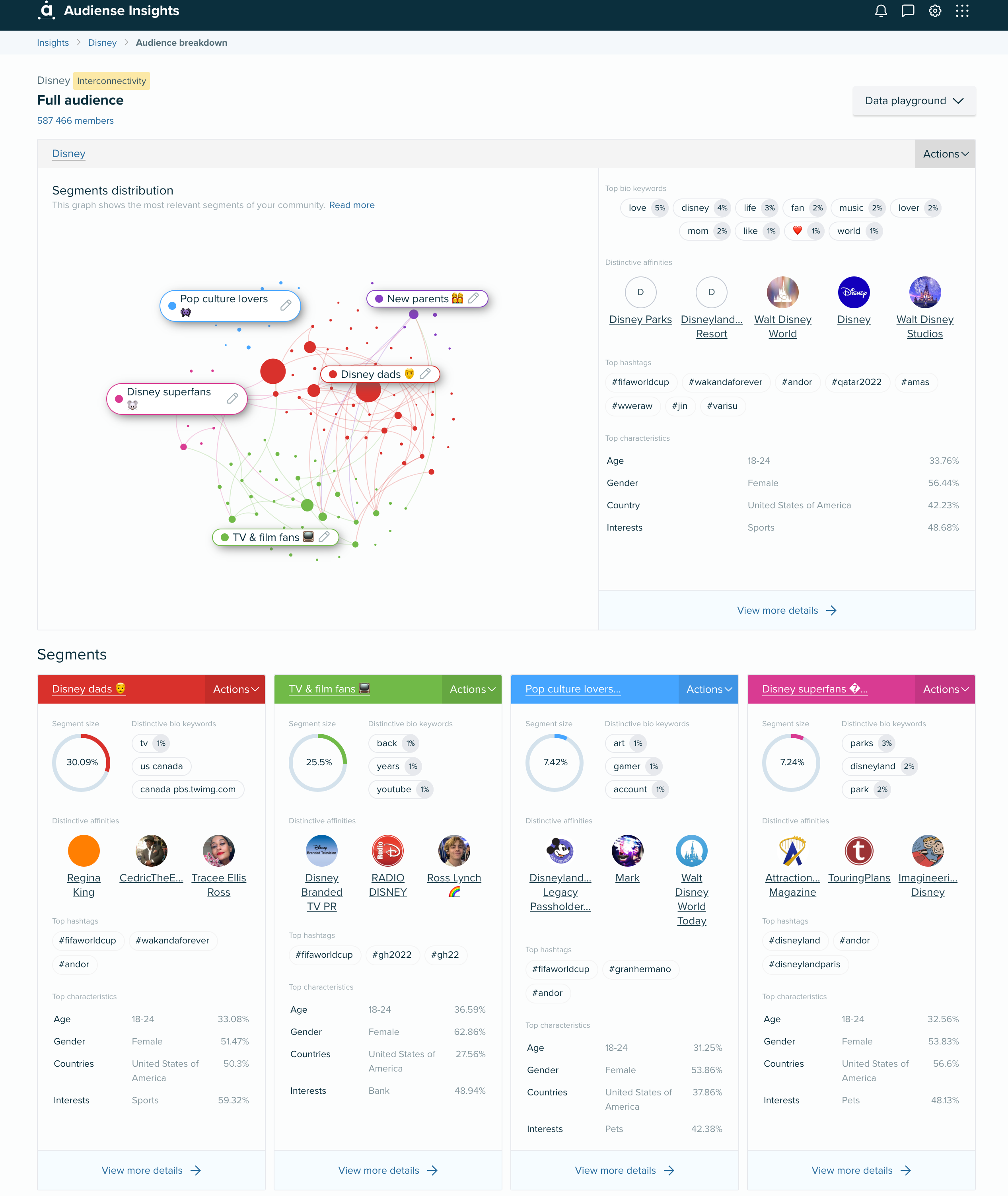4 methods to define your target audience for SEO
With almost ten thousand martech solutions, digital marketing has become more complex than ever before. Using software technologies allows you to conduct more precise analysis of online audiences, that means you’ll more likely reach the right people and attract them with an appropriate offer.
Attracting traffic to your website is not enough, as you need to know precisely who you target, predict the intent, and make such an offer that the user won’t pass by. Marketers now look for high-quality and targeted visitors interested in discovering more about the products and purchasing them eventually.
Thankfully, the market generated plenty of methods and tools to discover the target audience, research their behavior, and optimize the web pages accordingly. Audience research is crucial, and we are here to show four easy ways to define your target audience.
Why is a target audience important for SEO?
People tend to think that quantity is the only thing that matters – more backlinks, keywords, and users. Honestly, numbers do matter in a lot of cases. As more people come to your website, more will become interested in buying from you.
But it doesn’t always work like this. We have to first think about the quality and then quantity. If 500 people visit your website and only 50 of them are from your target audience, it could make a messy marketing report. Now, what if at least 300 of those 500 are interested?
Sounds great, right?
Knowing who to sell to can give you a few benefits:
- Help you with keyword research, ensuring you use queries relevant to the searchers you want to reach
- Drive proper traffic, increasing your revenue
- Aid you in creating the right content plan with topics potential customers are actually interested in
- Reduce the bounce rate on your pages
- Encourage users to come back for more information and, hopefully, the products and services you provide
4 effective tips to determine your target audience for SEO
Here, we have four recommendations that will bring you closer to perfectly understanding the audience most likely to be interested in your offers. There’s a lot of data analysis and buyer persona identification ahead, so gear up! Combine these approaches to get more data and familiarize yourself with the people who will soon be buying from you.
#1: Use Google Analytics
Google Analytics provides insight into the behavior and qualities of your audience. After all, the first thing you should do when learning about your audience is to look into who visits your website. Then, through Google SEO create content that will rank highly in organic search results.
Google Analytics is by far the easiest way to get basic information such as
- Demographics
- Age
- Gender
- Interests
- Geographic location
- Behavior, and more.
This data should help you make initial changes for further search engine optimization, such as the locations you target and the content you share on your blog. Besides, you can find out whether you are targeting the right market in the first place because there may be a dissonance.
#2: Research SERPs
The next stage after discovering who visits your website is to research the main commercial queries used by your target audience by putting them into Google Search. The SERP will show you the ads and organically ranked pages of your competitors.
Try to find a connection between the particular groups of keywords and the types of pages you see in organic results for them. At this stage, analyze how the top 10 competitors communicate and what groups of people they're trying to reach. Look for where you misunderstood what stage of the customer journey the audience was at. By analyzing how competitors managed to rank so high, you can find tips for your own product pages.
Of course, to overperform your competitors’ websites, it’s better to have as much data as possible. The more information you have, the more comprehensive strategy you can build, as the best decisions are data-driven ones. By using an advanced tool like the SE Ranking SERP Analyzer, you can understand competitors’ patterns by analyzing both on-page and off-page factors, including the content structure and commonly used terms (phrases).
The strategies of site competition can show you a lot about your own room for development. Use these insights to improve your pages and attract target traffic.
#3: Analyze social media audience
Aside from Google trends, you should pay attention to buyer personas on the social plane. Platforms like Audiense will give you insights about your audience, which you can use in your marketing strategy to draw the attention of potential customers.

First, you must determine audience data:
- Demographics – age, gender, location, household income, occupation, and even education.
- Interests – topics, activities, products, and services people have in common.
- Behaviors – online platforms they visit, their hobbies, favorite publications, sports, etc.
You could have more than one TA, and that’s normal. Your primary audience consists of people with similar values to yours and is most likely to become loyal customers. The secondary audience consists of people who have common qualities but aren’t a 100% match.
Having such a comprehensive information, you can boost your social media performance and find the right approach to your customers.
Pro tip: Use Audiense Connect solution to create your own chatbot and make your customers even more engaged. Communicating with existing users directly via chatbot, you can get new insights about their needs.
#4: Conduct audience surveys
Finally, why not ask your audience directly about their experiences and desires? Survey your audience and use the gathered info to find content gaps, collect keyword ideas, review product offers, and more. You may get some good recommendations from people who are already buying from you or from those who are thinking of doing so.
You can put the forms right on the website, send them to your email list, or even hire professionals to craft a survey or use digital tools to ensure you get a lot of replies.
Pro tip: To get a lot of feedback, keep your survey concise and don’t ask for tons of personal information. Too many questions may take too much time to answer, and having too many fields for personal info may scare people off.
Summary
A target audience is very important when it comes to SEO and, to be honest, the success of your company. Creating an outstanding product or service is one thing, but there’s also a second part to the future purchase – the customers.
Therefore understanding who your target audience is and what it needs is crucial. It will:
- Help you craft a content plan that will make people curious and eager to come back.
- Guarantee you use the right keywords that your target audience also uses.
- Increase your revenue by reaching out to the right people.
There are several ways to find out who your target audience is and understand it in the long run. Firstly, you can gather data from Google Analytics and analyze search engine results pages to see basic info on your TA, how the competition communicates with potential buyers, and how you can do it better.
You can also get social insights into your audience’s behavior with the help of automated tools. And finally, it’s worth talking to the people who already visit your pages. Conduct an easy survey that will give you direct information about these visitors, their interests, etc.






